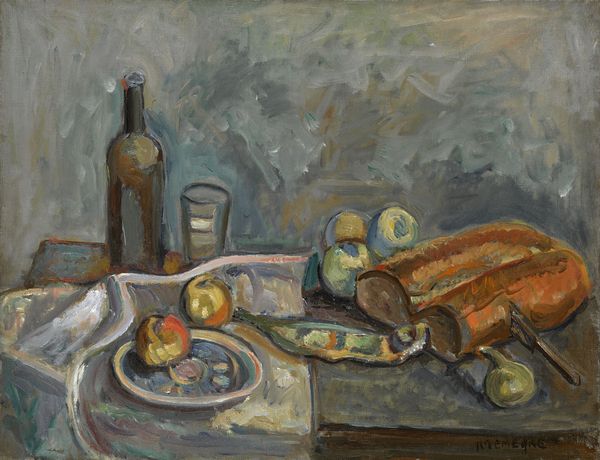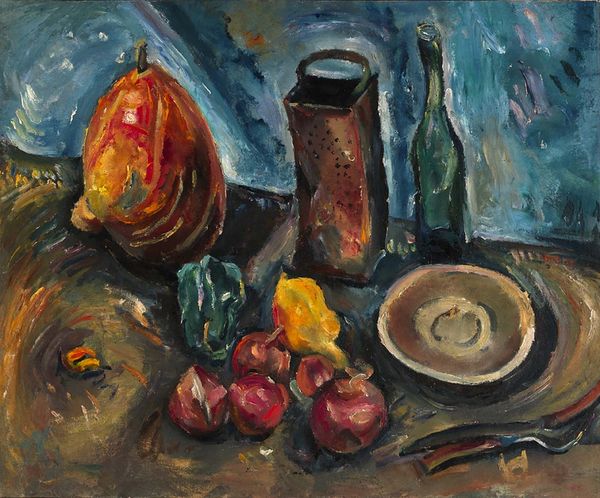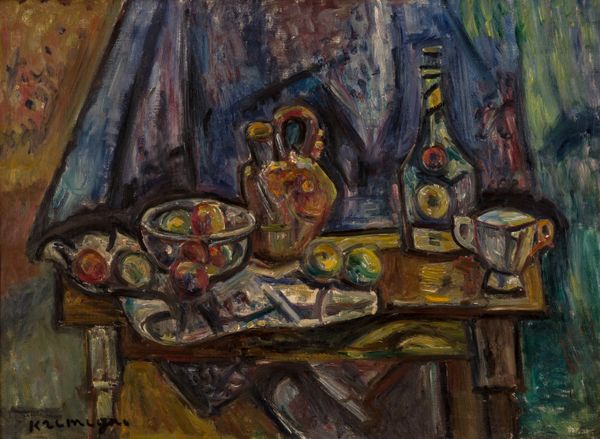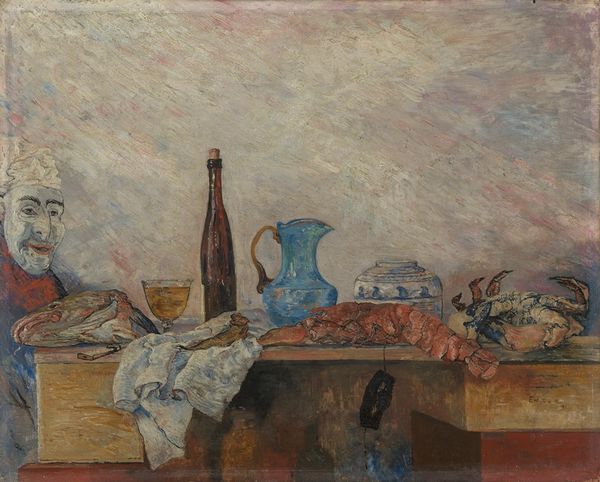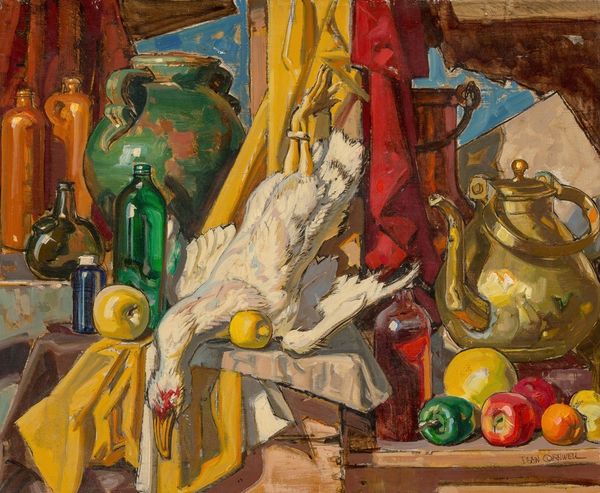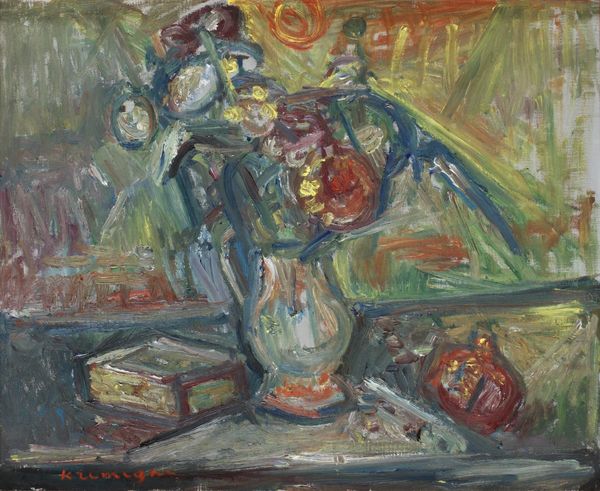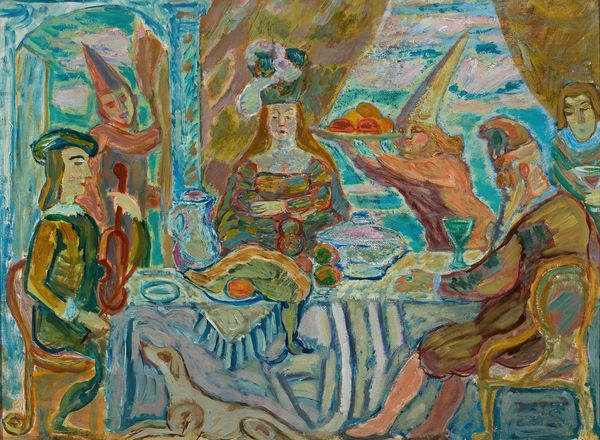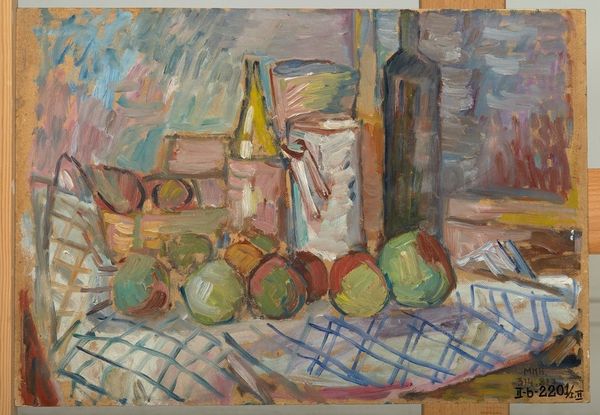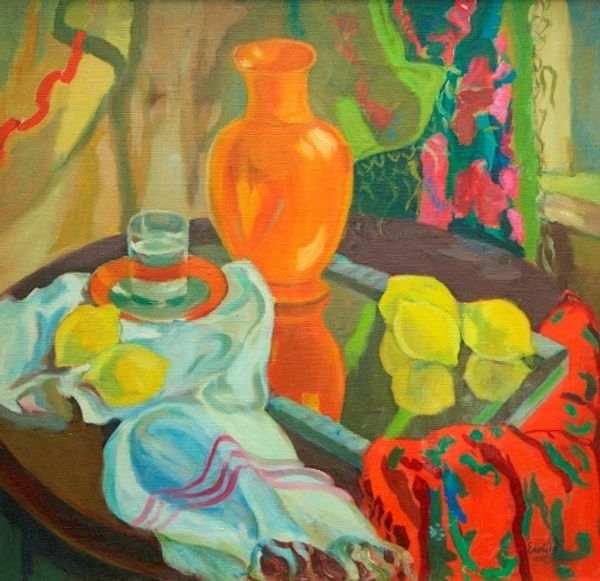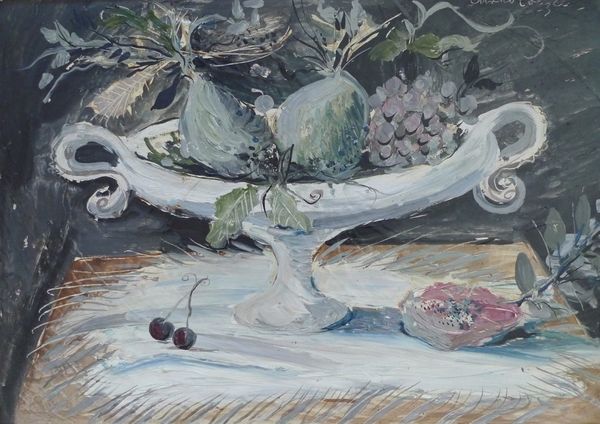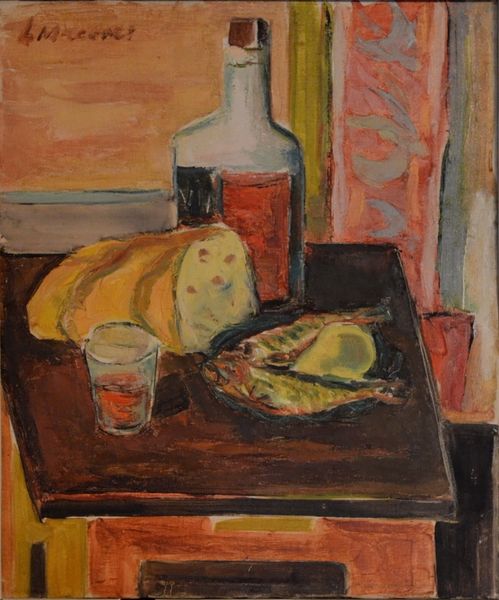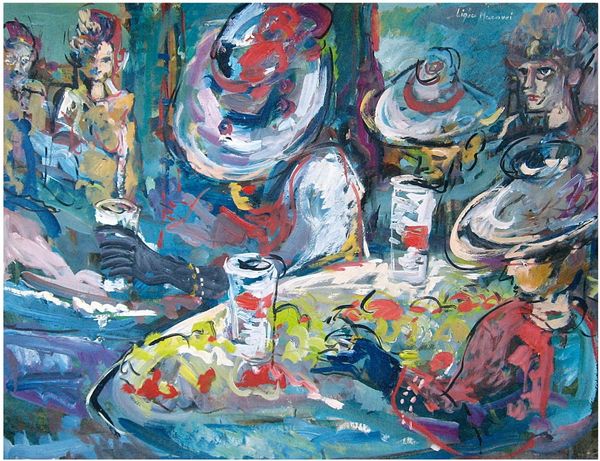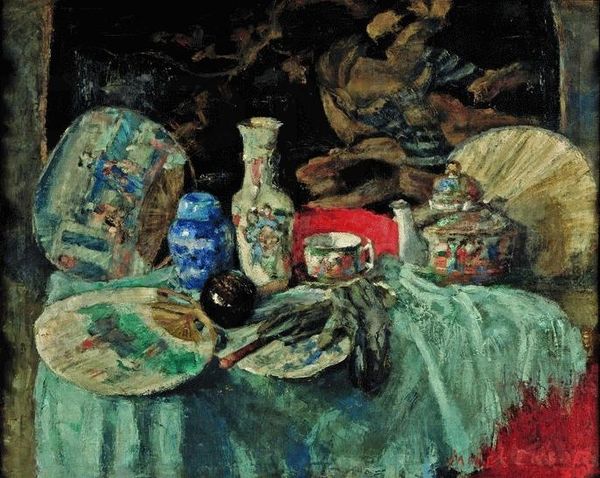
oil-paint
#
oil-paint
#
impressionist landscape
#
oil painting
#
expressionism
#
naive art
#
modernism
Copyright: Public Domain: Artvee
Editor: Here we have Zygmunt Waliszewski’s “Island of Love” from 1929, an oil painting. I’m struck by the layering of textures, the almost crude application of paint makes for such a tangible surface. What initially stands out to you in terms of its composition and formal qualities? Curator: Notice how the artist has created a shallow pictorial space, almost flattening the composition. Observe the juxtaposition of textures—the roughly hewn background contrasts with the smoother surfaces of the bottles, or even the glazed pottery. Consider the role of color; how does the artist employ a predominantly earthy palette, and how do the vibrant accents of red and green disrupt this overall tonality? Editor: I see that. The reds really pop, especially in the apples. So, is the choice of these somewhat clashing tones intentional? Curator: Undoubtedly. Waliszewski isn’t aiming for photorealism, but instead seeks to create a heightened, emotional response through the manipulation of color and form. Think about the heavy impasto and broken brushwork. This textural approach lends a visceral quality. Have you considered the relationship between the objects depicted? Editor: They feel very randomly placed; or placed specifically to see how each object interacts with one another formally rather than narratively. What I find most captivating is how the material quality amplifies the whole work. Curator: Exactly. And how do you believe this strategy ultimately functions, aesthetically? Editor: I see the artwork has a striking and almost raw quality to it, making a familiar subject somehow fresh. Curator: Precisely, prompting us to reconsider the relationship between representation and materiality in painting.
Comments
No comments
Be the first to comment and join the conversation on the ultimate creative platform.
